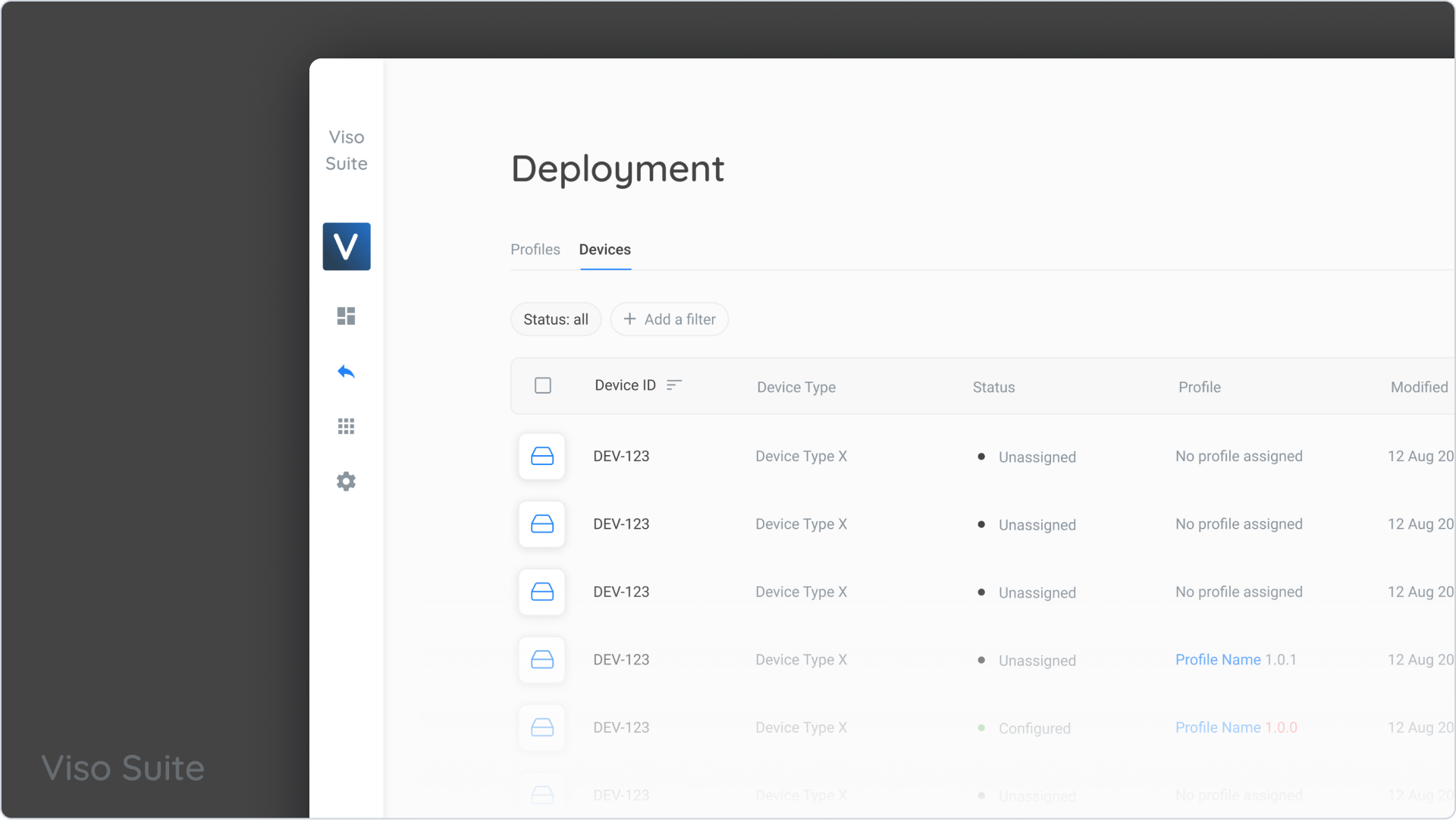Viso Suite lets teams securely manage and orchestrate AI application deployments to fleets of edge devices or edge nodes. The integrated edge device manager is a hybrid-cloud platform for securely managing and scaling AI vision deployments across thousands of servers or edge devices.
Using the extensible and scalable computer vision platform makes it easy to add AI vision capabilities to common sensors and cameras in various computer vision applications.
Integrated edge device manager
Viso Suite provides enterprise-grade edge management from within the cloud-native workspace. Viso lets you use edge devices, computers or servers, without writing code or installing clients or libraries manually – thus not only saving costs but also avoiding errors or security issues.
The automated platform supports a wide range of hardware platforms, brands, and vendors. One or a large number of devices can be automatically enrolled and remotely managed with the built-in fleet manager for edge endpoints.

Run on-device machine learning at the edge
Applications and services can run on a wide range of hardware and processors, from different vendors including Intel, Nvidia, Google, ARM, and HP. The end-to-end edge computer vision development capabilities provide no-code and low-code capabilities to securely deploy anywhere, from the edge to the cloud.
The deep integration of services and tools within Viso Suite accelerates time to solution, mitigates integration issues, and allows secure management and scaling of AI vision deployments.
- Cross-platform Compatibility
Applications built on Viso Suite are cross-platform portable and run on any supported device type. We optimize all modules out-of-the-box. Due to our partnerships, Viso Suite users are first to test and use the latest AI hardware. - Application Portability
Build once, deploy anywhere. Seamlessly move from a hardware platform to a different one. Exchange the device and hardware as the project advances, seamlessly switch from prototyping devices to optimized hardware. Your system is future-proof. - Virtual Devices (On-premises/cloud endpoints)
Viso Suite allows testing with virtual devices in the cloud. Even with no physical device available, you are able to run applications simulating before deploying to physical devices.
Manage a fleet of edge devices in the cloud
Viso Suite supports a wide range of edge devices and embedded computers that can be used to process the video feed of cameras. One workspace allows teams to enroll hundreds of endpoints securely and automatically. The integrated IoT communication, remote access management, and monitoring services allow operating large distributed edge computer vision systems.
- Generic Computing Devices (x86)
x86 includes processors from Intel, AMD, and others. It is the most popular type of processor used in common computers, embedded systems, industrial computers, and small, ruggedized systems. - Intel NUC (amd64)
Intel NUC is a small-form-factor computer designed by Intel. The edge computing device has a built-in CPU and can be operated with VPU or TPU AI accelerators. - Up Board (amd64)
The Up Board is an embedded single board computer for edge computing. It can be used with one or multiple VPU or TPU AI accelerators. - Custom Devices (Open Platform)
Developers can create custom device images to integrate their own or highly specialized computing platforms. Our AI and Edge Engineering teams provide support and development services.
Run computer vision tasks on any processor
Viso Suite provides built-in connectors to run AI applications at the edge for on-device computer vision processing in real-time. Everything without writing code. Therefore, the platform supports a wide range of processors for image processing and deep learning inference.

The ability to change the processor types of an application not only makes it future-proof but enables dramatically higher efficiency in terms of costs and energy consumption.
- Central Processing Unit (CPU Computing)
Use the built-in CPU to process light AI inference tasks while prototyping. For in-production and real-time performance, switch to GPU, VPU, or TPU with one single click. - Graphics processing unit (GPU Computing)
Use GPU computing for high-performance applications with complex tasks. NVIDIA AI acceleration with CUDA allows parallelized inference processing. - Vision Processing Unit (VPU Computing)
Intel Movidius Vision Processing Units (VPUs) are hardware accelerators for deep neural networks. A Movidius Myriad X can be connected as a USB stick or PCIe board to computing devices. - Tensor Processing Unit (TPU Computing)
Use Google Coral Tensor Processing Units as USB-stick or PCIe board. TPU AI hardware accelerators can be attached to any generic computing device. - Multi-Processor Computing
Viso Suite allows combining multiple processors to build high-performance computer vision systems. For example, a CPU can be used for image pre-processing tasks of frames fed into a DL model that runs on GPU.